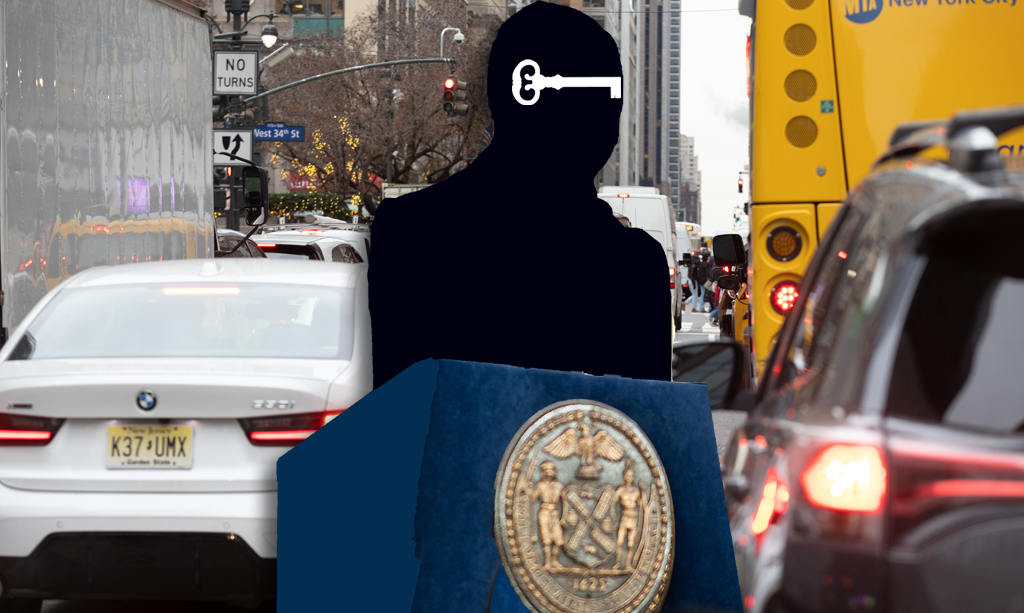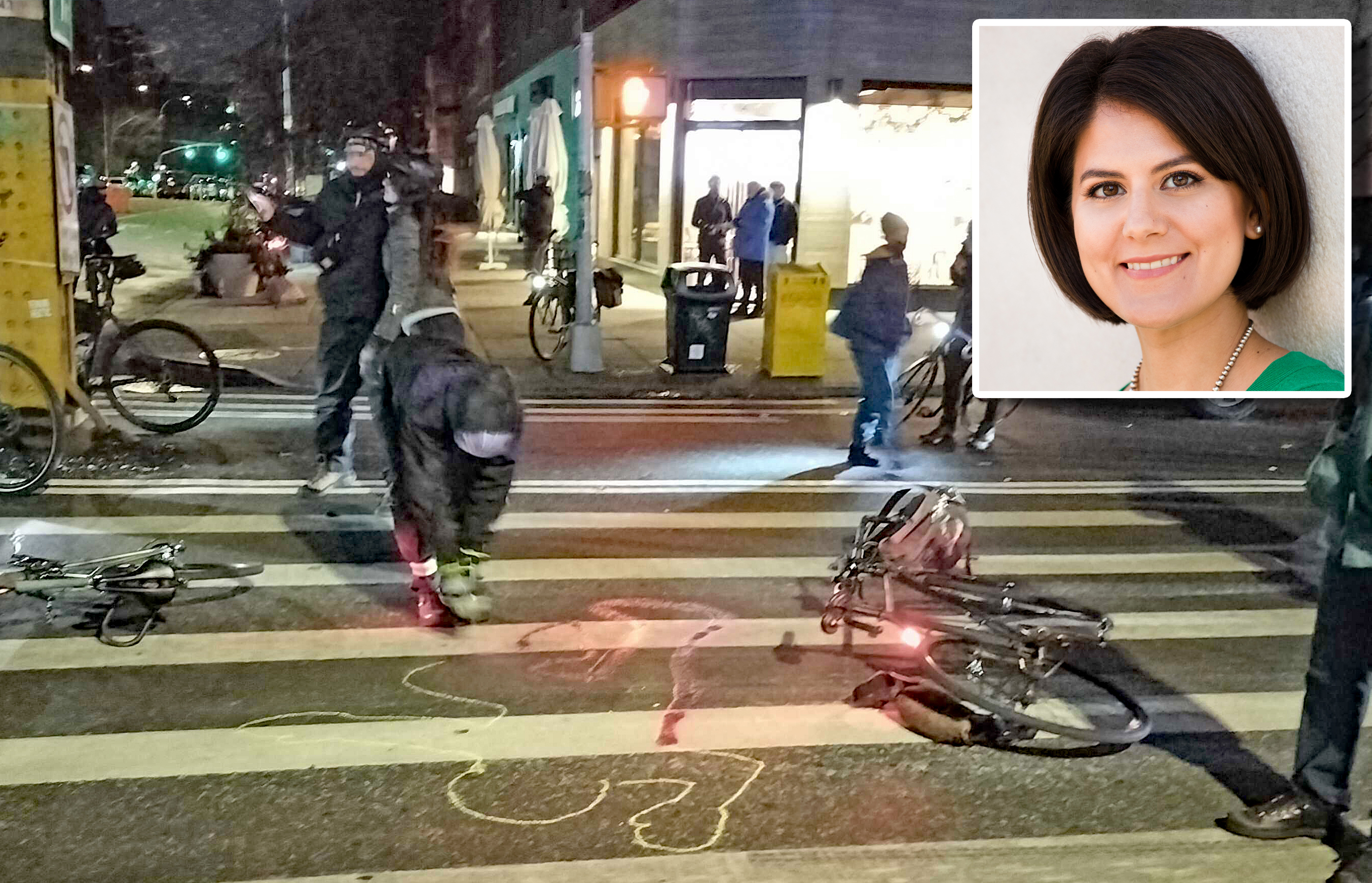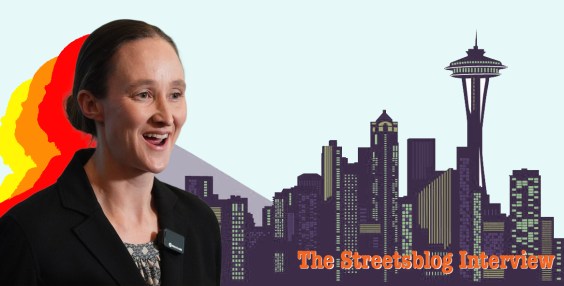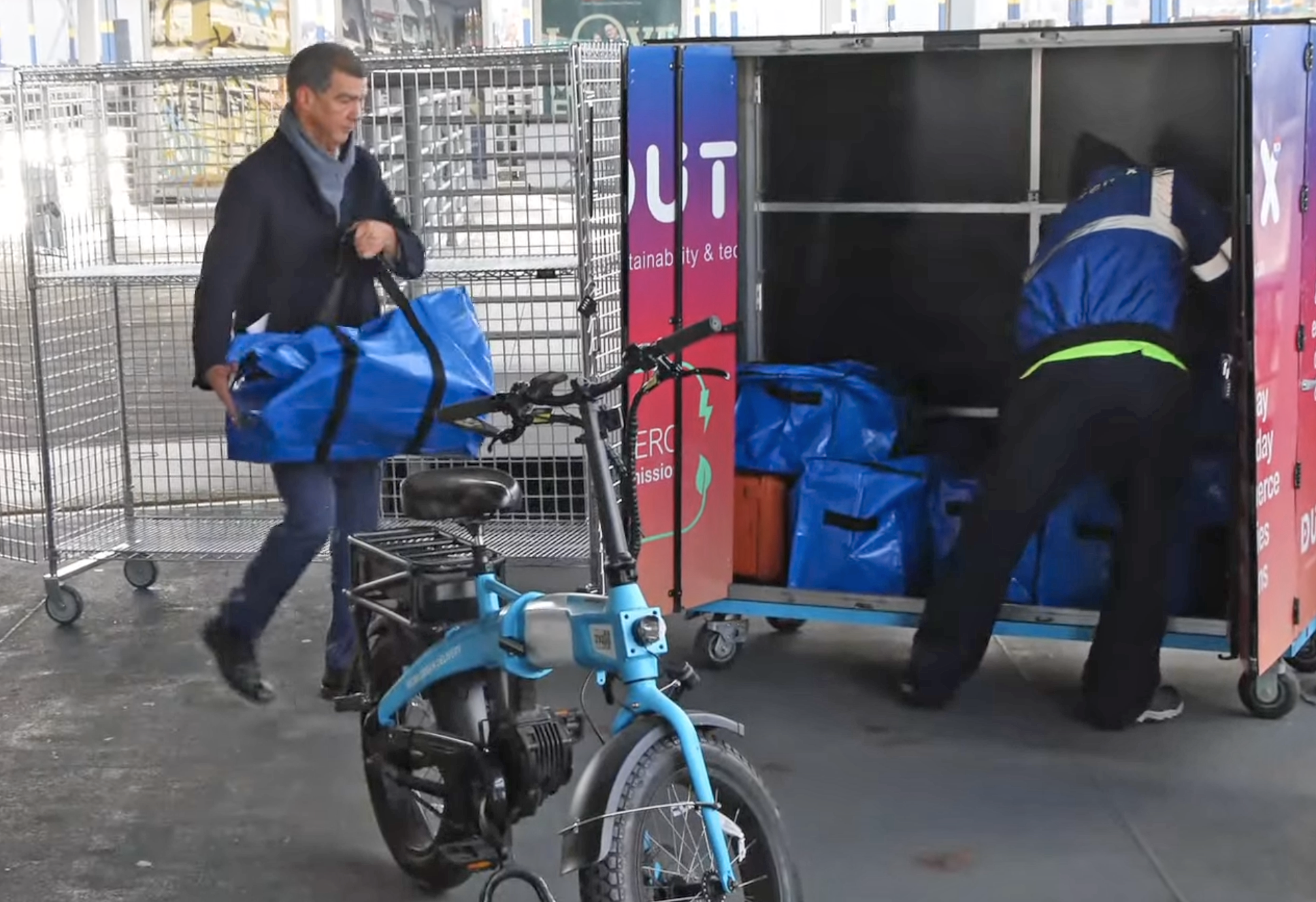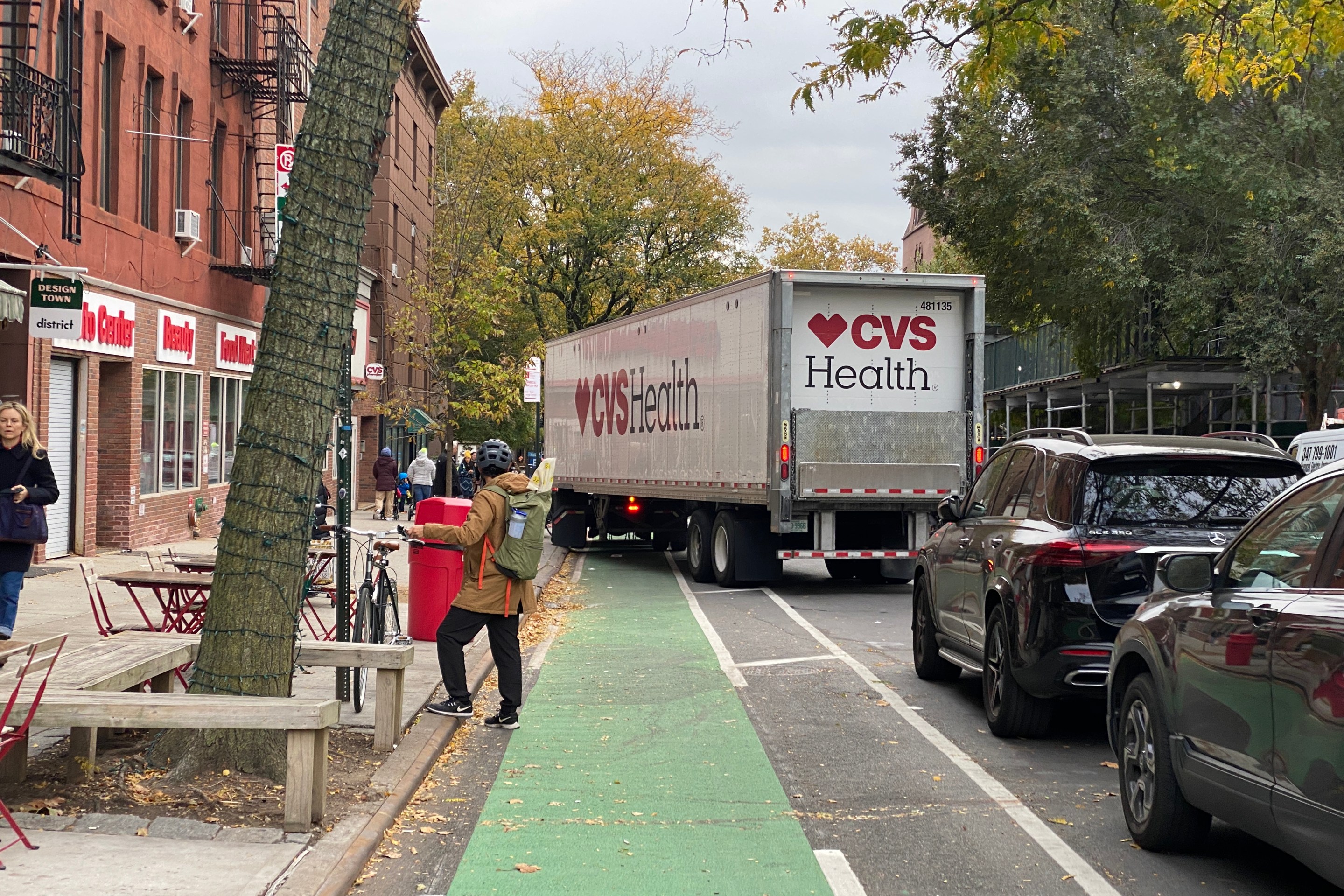This doesn't have to be hard.
New York City's next mayor can quickly make streets safer by simply reviving a raft of projects that the Adams administration killed, watered-down or simply failed to complete at the behest of politically connected opponents or in the name of vague notions of "community input."
There's a silver lining to the mayor's interference and shortcomings: many very promising projects will require little or no work to become reality — giving a fresh-faced, bereted or graying newcomer easy wins ... if he wants them.
"There’s a huge amount of stuff that [a new] mayor could look good on," said Jon Orcutt, director of Advocacy at Bike New York and a former Department of Transportation planner under mayors Bill de Blasio and Mike Bloomberg. "The plans are in somebody’s drawer and can be rolled out quickly."
These aren't large-scale endeavors or major policy shifts (more on that in another story), but low-hanging fruit that the next mayor could pick up easily.
Better buses
Buses have been the neglected child of the Adams administration, as Hizzoner failed to get even close to the required annual mileage of new protected bus lanes in the Streets Master Plan and has actively worked against projects close to the finish line.
Top of the list are paused proposals like a busway on 34th Street in Manhattan, an idea that dates back to the Bloomberg administration and would mimic the successful de Blasio-era 14th Street busway. It has the backing of locals but nonetheless remains on hold.
The mayor's intervention on the Midtown strip even garnered a scathing video by Democratic nominee Zohran Mamdani, dotted with citations to Streetsblog's reporting, so we're going to assume he's reading these pages for ideas too.
The frontrunner correctly noted in the clip that making buses faster "isn't complicated, it doesn't cost much, you don't need Albany. All the tools are in the power of City Hall."
A more ambitious mayor could replicate the same busway model on 42nd Street, although the city has not yet made such a proposal for The Deuce.
The ever-changing plans to redesign nearby Fifth Avenue should also reincorporate bike lanes and a true bus-priority corridor, as opposed to the current plans pushed by bigwigs that insist on through-traffic for private motor vehicles.
The Bronx desperately needs busway corridors to fill in reliable east-west transit connections for the borough whose subway network mainly goes from north to south.

Two projects that were in the works are the Fordham Road busway, which Adams notoriously killed to placate big business in the boogie down. Another busway on Tremont Avenue was supposed to go in this spring, but has yet to see the light of day, and could be another layup for a mayor that cares about Bronxites' commutes.
A new mayor could also expand the hours again for existing busways that Adams cut in downtown Jamaica and Flushing, Queens, and on 181st Street in upper Manhattan.
Bike boosts
Adams has done somewhat better on installing protected bike lanes, but he still stymied promising redesigns and broader programs to make cycling safer and more convenient in the city.
His successor should unpause the road diet for Third Avenue in Brooklyn's Sunset Park, where residents and politicians – including Eric Adams when he was still Borough President — have been begging for a fix.
McGuinness Boulevard in Greenpoint remains half done (and dangerous), and the next Gracie Mansion occupant should finish the northern section where Adams installed a watered-down compromise that retained more car space after pushback from local political donors. Mamdani and independent candidate Jim Walden have committed to finishing the job.
Ditto for Ashland Place in Fort Greene, where a last block of a crucial two-way protected bike lane vanishes because City Hall intervened to keep the street two-way there for cars, on behalf of a developer that owns a residential building and a garage there.
The city should double down double-wide bike lanes all along Manhattan's avenues, and on better ways to protect bike lanes from car traffic by expanding its pilot program of better barriers.
DOT deployed plastic armadillos or lower concrete barriers to some locations but has yet to more comprehensively upgrade its decade-old designs using flimsy flex post, clumpy jersey barriers, or parked cars.
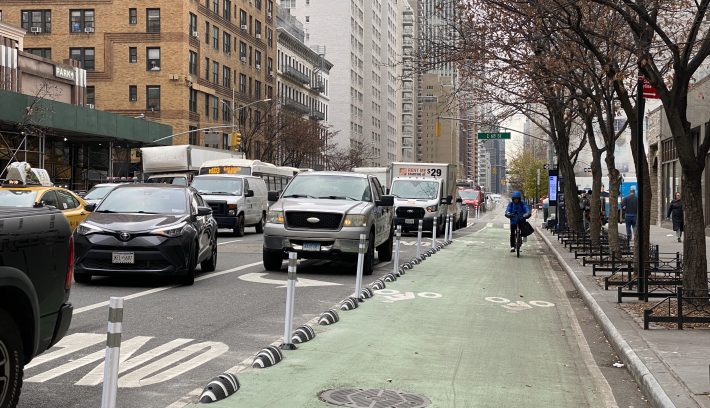
Existing protected bike lanes also shouldn't disappear during road construction projects, sacrificing safety to maintain car traffic, as DOT did on Brooklyn's Fourth Avenue.
Adams also appears to have forgotten about his pledge to install 500 safe bike parking lockers throughout the city, which would reduce the danger of theft – a key deterrent for many to get into cycling.
Supposed peer cities like London have run laps around the Big Apple, rolling out tens of thousands of closed bike storage, and our proposal is basically ready to get going.
"You just need to flip the 'On' switch for the procurement process," said Orcutt.
Lastly, the mayor should undo the current anti-bike law enforcement policies like cops issuing criminal summonses for low-level offenses, and the push to cap e-bike speeds at 15 miles per hour.
Instead, DOT should permit cyclists to go through red lights when it's safe to do so, for example with its delayed Idaho Stop rule.
Public realm and safety
One of the few good things to come out of the Covid-19 pandemic was the city reevaluating how it apportions its limited space more toward people and not just cars, with programs like open streets, curbside dining, and by naming a czar to oversee the public realm across the alphabet soup of city agencies.
But the new mayor needs to actually support these efforts with real funding, starting with open streets, which Adams has allowed to shrink for years and which rests on the back of predominantly volunteer labor.
Open streets are also a great first step toward launching into more solid street redesigns or full-scale pedestrianization, as the city plans for the "gold standard" 34th Avenue in Jackson Heights and sections of Broadway in Manhattan.
DOT laid some early plans to upgrade the popular Vanderbilt Avenue open street. It was part of the proposed revamp of Grand Army Plaza, which is another high-profile public space project that has gone nowhere fast.
The 2026 mayor should also work with the City Council to end its winter ban on curbside outdoor dining, and clean up the cumbersome and costly process to set up some tables and chairs outside.
The city's chief has to take a page out of the book of colleagues across the Hudson River in Hoboken by embracing a citywide ban on parking at corners, also known as daylighting.
A bolder mayor could also lower speed limits to 20 miles per hour citywide by nudging the Council to finally use its state-granted power to set a safer default road regulation.
